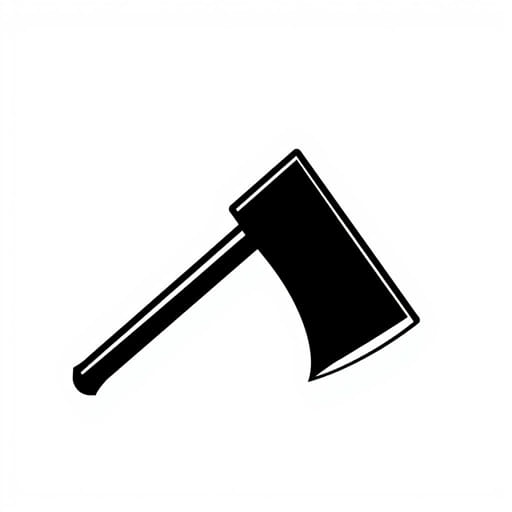Among the many iconic weapons used in medieval Europe, the poleaxe stands out as both a fearsome and practical tool of war. Designed for armored combat, the poleaxe combined the functionality of several weapons into one, allowing warriors to slash, crush, pierce, and hook with a single armament. One of the most common questions regarding this historical weapon is: how much does a poleaxe weigh? The answer reveals not only engineering ingenuity but also the physical demands placed on medieval warriors. Understanding the weight of a poleaxe helps provide insight into medieval combat, armor usage, and the martial training of knights and soldiers.
What Is a Poleaxe?
A poleaxe is a type of polearm used primarily in the late Middle Ages and Renaissance periods, roughly from the 14th to 16th centuries. It was specifically designed for combat against armored opponents and was widely used in knightly duels, tournaments, and on the battlefield.
The weapon features a wooden shaft, typically between 4 and 6 feet in length, with a heavy head combining multiple striking surfaces. A classic poleaxe head includes:
- An axe blade for chopping
- A hammer or spike on the opposite side for crushing or puncturing armor
- A top spike for thrusting
- A langet system (metal reinforcements) that extends down the shaft for durability
This multipurpose design allowed the wielder to adapt to various combat scenarios, making the poleaxe especially effective in armored foot combat.
Average Weight of a Poleaxe
While the poleaxe looks intimidating and powerful, it was not an excessively heavy weapon. On average, a historical poleaxe weighed between4 to 8 pounds(1.8 to 3.6 kilograms). The weight was distributed strategically to provide balance and control, ensuring that the weapon could be used effectively in one-on-one duels or in formation combat.
Breakdown of Weight Factors
- Head: The head of the poleaxe, made from iron or steel, typically accounted for most of the weight. It alone could weigh 3 to 5 pounds depending on the design.
- Shaft: Made from ash, hickory, or other strong hardwoods, the shaft was relatively light yet durable, contributing around 1 to 2 pounds.
- Additional Reinforcements: Langets and rivets added a small amount of extra weight for reinforcement.
This careful construction ensured that the weapon remained maneuverable, even when used in prolonged combat. Despite its deadly appearance, the poleaxe was balanced enough to allow quick changes in direction and precision strikes.
Comparison with Other Medieval Weapons
To better understand the weight of a poleaxe, it’s useful to compare it with other common medieval weapons:
- Longsword: Typically weighed between 2.5 to 4 pounds.
- War Hammer: Usually 3 to 6 pounds.
- Halberd: Similar to the poleaxe but often longer and heavier, weighing 6 to 10 pounds.
- Mace: Varied in weight, generally between 2 to 5 pounds.
The poleaxe falls in the middle of the spectrum heavier than a sword but lighter than many polearms, making it ideal for armored foot soldiers who needed both versatility and control.
Design Efficiency and Martial Use
The weight of the poleaxe was optimized for its purpose. Too heavy, and the user would tire quickly or lack the speed to parry or strike effectively. Too light, and the weapon would lack the force needed to penetrate or damage plate armor. Historical manuals and treatises, such as those by Fiore dei Liberi and other fencing masters, show that poleaxes were used in highly skilled and technical ways.
Techniques Involving the Poleaxe
- Hooking and pulling: The beak or spike could hook onto armor or limbs to unbalance opponents.
- Thrusting: The top spike allowed for precise attacks at gaps in armor.
- Chopping: The axe blade could damage helmets or joints.
- Bludgeoning: The hammer head crushed armor and concussed enemies.
All of these techniques depended on a weapon that was heavy enough to do damage, but not so heavy that it became clumsy. The balance point, often just below the head, gave the user mechanical advantage without sacrificing speed.
Training and Strength Requirements
Using a poleaxe effectively required rigorous training. Knights and men-at-arms would spend years honing their skills in weapon handling, footwork, and endurance. Although the poleaxe’s weight was manageable, swinging it repeatedly in armor took considerable strength and conditioning.
Combat in tournaments or real battles demanded not just brute force, but also timing, coordination, and the ability to read an opponent’s movements. The manageable weight of the poleaxe made it suitable for prolonged fighting, but success still depended heavily on the skill of the user.
Modern Reconstructions and Historical Accuracy
Many museums and collectors have preserved or replicated historical poleaxes. Modern blacksmiths and martial artists who reconstruct these weapons for reenactments or study often aim for historical accuracy, including weight. These replicas frequently fall within the 4 to 8-pound range, confirming that historical estimates are reliable.
Weapons that exceed 10 pounds are generally considered ceremonial or decorative and are not representative of functional battlefield weapons. While some poleaxes may have been slightly heavier or lighter depending on the period or region, the general design principles remained the same.
In answer to the question, a typical poleaxe weighed between 4 and 8 pounds, striking a balance between force and functionality. This weight made it suitable for use in armored combat, offering multiple attack options in a single, versatile weapon. Far from being overly cumbersome, the poleaxe was engineered to provide knights and soldiers with an edge in the brutal melee of medieval warfare. Through efficient design and skilled use, the poleaxe became one of the most respected weapons of its time. Understanding its weight not only provides technical insight but also enhances appreciation for the physical demands and tactical sophistication of historical combat.
